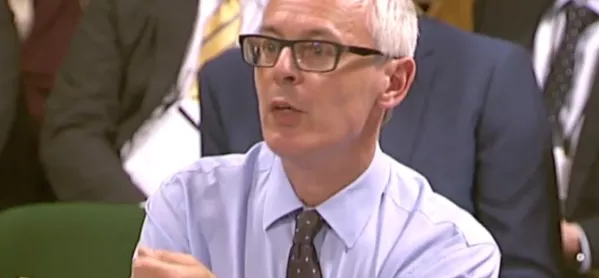- Home
- Pupils ‘hosed down’ for asbestos and four other key points on school buildings heard by MPs today
Pupils ‘hosed down’ for asbestos and four other key points on school buildings heard by MPs today

Asbestos removal, free schools opening in temporary homes and the amount of money available for school buildings were key themes of a Commons committee hearing on school capital funding.
MPs on the Public Accounts Committee this afternoon took evidence following a National Audit Office report which put the cost of returning all school buildings to a satisfactory or better condition at £6.7 billion.
Here are five key points that emerged:
1. Two-thirds of free schools open in temporary accommodation
However, Peter Lauener, chief executive of the Education Funding Agency (EFA), said it made little difference to their Ofsted ratings, with 73 per cent in temporary accommodation rated good or outstanding, compared to 76 per cent with a permanent home.
When challenged by committee chair Meg Hiller about why there were allowed to open in temporary homes, Jonathan Slater, permanent secretary of the DfE, said: “There is a demand from parents that they open.”
2. Developers’ contributions to education could be reformed
The DfE is in talks with the Treasury and the Department for Communities and Local Government over the way housing developers make financial contributions towards schools when they build new homes.
Earlier, Peter Colenutt, chairman of the Educational Building and Development Officers Group (EBDOG), warned MPs that developers were becoming increasingly sophisticated in minimising their contributions, due under the Community Infrastructure Levy.
Mr Slater said a policy statement was due in the summer.
3. Asbestos removal would cost £100 billion
Ridding England’s schools of asbestos would cost around £100 billion, it has been suggested.
The only way to properly deal with the toxic substance is to rebuild affected buildings, Mike Green, director of capital at the EFA, told the committee.
One school had to “hose down” and “de-dust” pupils because of concerns about exposure to asbestos.
Hetton School in Sunderland has to close “various parts of the schools” in windy weather because of concerns about asbestos.
Former head Phil Keay said: “In terms of the asbestos, most of the asbestos is encased, but there were some ceiling tiles which are taped together, so therefore should be fairly secure, but on windy days, literally the wind got through the building, would open doors and would lift ceilings. And when ceilings lift, the dust then falls.”
Two or three times, the building had to be closed off, he said, with students sent to a “defumigation van, an emergency van, to make sure that they were de-dusted, and hosed down and cleaned”.
Mr Green, director of capital at the EFA, later told the committee this sounded like a “reasonably unique situation”.
He told MPs: “The only way to truly address asbestos is to rebuild the building. The cost of rebuilding the estate, roughly £100 billion - 85-ish percent of schools in the survey had asbestos in them.
“The clear advice of the Health and Safety Executive is leave asbestos where it is and manage it, because it is difficult to take out safely.”
4. The EFA is testing predictions of how long school buildings would last
As it demolishes schools that it is rebuilding, the DfE is carrying out “destruction testing” to examine forecasts about the length of the school’s life.
Mr Green said: “It’s quite rare to be able to poke a building until it falls over, but of course that’s exactly what we are doing as part of PSBP [Priority Schools Building Programme]. We had some concern about system build buildings, so what we have started doing is some destructive testing as we knock down the old buildings.
“We are going to have a really good look at the forecast length of life left in those buildings. I have to say the news so far is good, in that we don’t have significant concerns, but we will continue to investigate buildings we knock down.”
5. Lack of capital funding for schools
Mr Colenutt, of EBDOG, told MPs it would cost Hampshire £370 million to bring the condition of its schools up to a good standard, but the county only received £18 million a year.
The National Audit Office report found that at least £6.7 billion is needed to restore all school buildings to a satisfactory condition.
That figure was based on work carried out in 2012-14, and Mr Slater said £14 billion would have been spent by the end of this parliament. However, he acknowledged that the condition of school buildings would not have stood still over this time.
Committee member Kwasi Kwarteng highlighted a section in the report that said the government prioritised urgent needs, rather than preventative work, something Mr Slater said he did not dispute.
Mr Green, of the EFA, said the majority of preventative work in schools was carried out through revenue funding, and the government was about to publish guidance for schools on how to take care of their estate.
Want to keep up with the latest education news and opinion? Follow TES on Twitter and like TES on Facebook
Keep reading for just £1 per month
You've reached your limit of free articles this month. Subscribe for £1 per month for three months and get:
- Unlimited access to all Tes magazine content
- Exclusive subscriber-only stories
- Award-winning email newsletters



